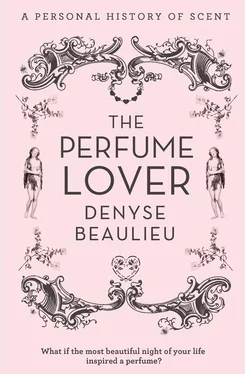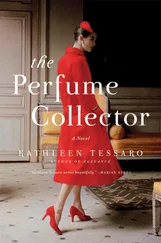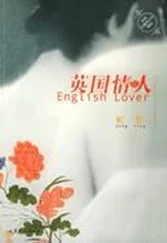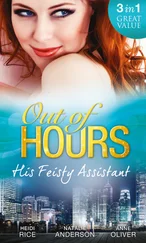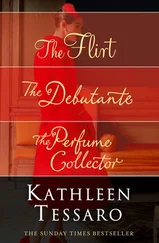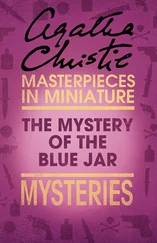So why indeed? If anyone can answer the question I’ve been asking myself since I was eleven, it is the historian Elisabeth de Feydeau. We’ve just been enjoying an al fresco lunch in a garden gone wild with roses, lush with vegetal smells rising in the afternoon heat. A tall, chic blonde with a sweet, sexy-raspy voice, Elisabeth was formerly the head of cultural affairs at Chanel; she teaches at ISIPCA, the French school of perfumery, as well as acting as a consultant for several major houses; she wrote a book about Marie-Antoinette’s perfumer and a history of fragrance. So as we nibble on petal-coloured cupcakes, Elisabeth graciously shifts into teaching gear. I have indeed come to the right place for an answer, she tells me; the sacred union between France and fragrance was sealed right here where we’re sitting, in Versailles.
If Catherine de’ Medici hadn’t come to France in 1553 to marry the future King Henri II, perfume might well have been Italian. Not only did Italy enjoy a climate allowing the cultivation of the plants used in perfumery, but with Venice lording it over the sea routes, all the precious aromatic materials of the Orient flowed into the peninsula. And in the dazzlingly refined Italian courts of the Renaissance where the young Duchess Catherine was raised, perfume-making, intimately linked to alchemy, was a princely pastime practised by the likes of Cosimo di Medici, Catarina Sforza and Gabriella d’Este. Italian alchemists had started to divulge their methods of distillation and many of their perfumery treatises had already been translated. When Catherine de’ Medici arrived with her perfumer Renato Bianco in tow, she brought along the Italian tradition in all its refinement.
The French perfume industry was centred in Montpellier, where research on aromatic substances and distillation was carried out at the faculty of medicine (one of the oldest in the world, founded in 1220), and in Grasse, where skins imported from Spain, Italy and the Levant were treated. Up to then, perfumery had remained a subsidiary activity for apothecaries and tanners. Spurred on by the Italian fashion for scented clothes, leather items, pomanders and sachets, it developed into a luxury trade.
But the true turning point came from the scent-crazed king who had determined to transform his court into the crucible of elegance: it was under the reign of Louis XIV (1638–1715) that the French luxury industries acquired the excellence and prestige they still boast today. And that spectacularly successful marketing operation was a very deliberate political endeavour … During his mother Anne of Austria’s regency the young king had lived through the War of the Fronde, an uprising of the nobility that had threatened the very existence of the monarchy. To keep his noblemen under control, Louis XIV decided to move his court away from Paris to the newly built Versailles. There, he transformed his most trivial activities – getting out of bed, being groomed and dressed and even using the ‘pierced chair’ (the 17th century version of the toilet, known in England as ‘The French Courtesy’) – into a series of ritual displays which courtiers had to attend to curry favour with the monarch. By compelling them to follow the fashions he launched and to participate in the court’s lavish spectacles, the Sun King made sure they had no time or money to plot against the Crown. To imitate him, courtiers turned their toilette (named after the toile, the piece of cloth onto which cosmetics were spread out) into a social occasion. Celebrity endorsement was invented in Versailles. If, say, the king’s current favourite used some new pomade or scented powder in front of her coterie, she might create a stampede for it. This bit of information would be carried by a brand-new medium, the fashion gazette.
This was the other reason behind Louis XIV’s marketing operation. Fashion would radiate from his royal person to his court, from the court to Paris, and from Paris to the entire world, which would draw much-needed currency into the kingdom. His minister of finance Jean-Baptiste Colbert therefore set out to build up the French luxury industry, sending spies abroad to steal trade secrets and poach skilled artisans, and finding out which professional corporations were likely to become economic forces for France. Colbert made a deal with the guilds: they would be granted privileges and exempted from certain taxes provided they came up with the best and the most beautiful products. ‘The château of Versailles became, quite literally, a showroom designed to display the know-how of French craftsmen to foreign monarchs and dignitaries. There was an order book when you came out!’ chuckles Elisabeth de Feydeau. Paris, with its fancy shops staffed by well-turned-out young women, glittering cafés and public gardens, became an extension of that Versailles showroom, spurring on further demand for made-in-France luxury items, which in turn spurred on creativity, as perfumers refined their art to meet the exacting tastes of their snobbish clientele.
The perfume and cosmetics industry was one of those encouraged by Colbert. He boosted its profitability by setting up the Company of the Eastern Indies to ensure the supply of exotic ingredients while plantations were developed in Grasse. Again, Louis XIV provided the best possible celebrity endorsement: his orange blossom water, which came from the trees in the Versailles orangery, was exported all over the world. It was the only perfume the Sun King tolerated in his later years: in the last decade of his reign, perfumes gave him migraines and fainting spells which may have been psychosomatic, or due to allergies. ‘No man ever loved scents as much, or feared them as much after having abused of them’, wrote the memoirist Saint-Simon.
In fact, the royal scent-phobia just about killed the industry. A Sicilian traveller noted that ‘foreigners enjoy in Paris all the pleasures which can flatter the senses, except smell. As the king does not like scents, everyone feels obliged to hate them; ladies affect to faint at the sight of a flower.’ And indeed, though Versailles and Paris reverted to their old fragrant ways under the gallant reign of Louis XV, one of the most groundbreaking products in the history of the industry came not from Grasse, Montpellier or Paris, but from Italy via Cologne, Germany, where Johann Maria Farina launched his Aqua Mirabilis. The ‘Miraculous Water’, a light, bracing blend of citrus, aromatic herbs and floral notes in an alcoholic solution, is known to this day as ‘eau de Cologne’. This new style of perfumery, a departure from the heavy, animal notes used by Louis XV’s libertine court, was well in tune with the tentative progress of personal hygiene practices and the tremendously fashionable back-to-nature philosophy of Jean-Jacques Rousseau. Noses and sentiments were becoming more delicate …
As Rousseauism swept through Europe, clothing, interiors, gardens and fragrances took on the tender floral tones that most flattered the fresh complexion of the kingdom’s premier fashionista, Queen Marie-Antoinette. It was under her reign that Paris consolidated its status as the trend-setting capital of the world. By the time her husband Louis XVI was crowned in 1774, the rigid etiquette of Versailles set up by the Sun King had lapsed and, as a consequence, the status of the aristocracy was rather less exalted than it had been. To stay ahead of the rising bourgeois class, the ladies of the court, led by Marie-Antoinette, resorted to the only thing that could keep them one step ahead of the commoners, however wealthy they were: fashion. In fact, this is how fashion as we know it – the latest trend adopted by a happy few for a season before trickling down to the middle classes – came into existence. Marie-Antoinette plotted the newest styles with her ‘Minister of Fashion’, Rose Bertin. She and her entourage would retain exclusivity for a set period, after which the item could be sold in Bertin’s Paris shop, Le Grand Mogol, and every woman who could afford it could dress herself ‘à la reine’. This, in itself, was a revolutionary move. As Elisabeth de Feydeau explains it, etiquette demanded that the Queen use Versailles suppliers. But Marie-Antoinette wanted her suppliers to go on living in Paris to sniff out the zeitgeist. Louis XIV had established the prestige of the French luxury trades, ‘but that little twist you can only find in Paris, that je ne sais quoi that makes Parisian women incomparable – and this comes out very clearly in the writings of foreign visitors of the period – emerges in the 18th century. There is a word that sums this up: elegance.’
Читать дальше
